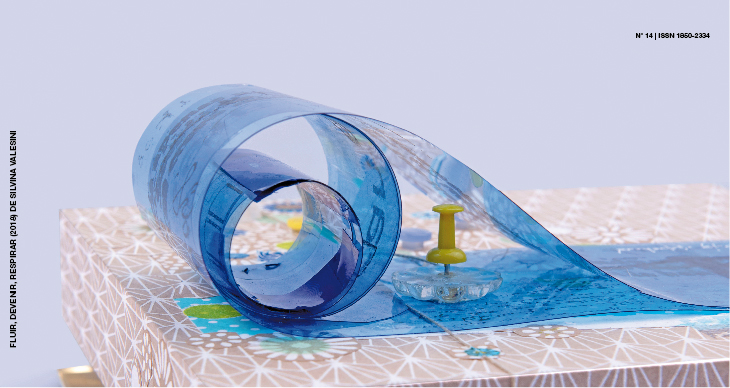New Paradigms for Product Design. Design Thinking, Service Design and User Experience
DOI:
https://doi.org/10.24215/24691488e012Keywords:
Product design, user experience, service design, design thinkingAbstract
In the present work we analyze the new concepts and theories related to the activityof Design Management, which focus on the experiences of people and the particularcharacteristics of each one of them. Specifically, from an Industrial Design perspective,the scope and relationships between these conceptual definitions —now made visible—that always belonged to the field of design of the discipline will be studied, trying to identifyhow they influence innovation and product development. Finally, it will conclude about itsstrategic relevance for public and private organizations, and the incorporation to the set ofprofessional activities.Downloads
References
Brown, T. (2008). Design Thinking. Harvard Business Review, 86(6), 85-92.
Dunn, M., y Davis, S. M. (2004). Creating the brand-driven business: It`s the CEO who must lead the way? Handbook of Business Strategy, 5(1), 241-245.
Eco, U. (2006). A passo di gambero experience [A paso de cangrejo]. Milán, Italia: Bompiani.
Fritsche, K. R. (2010). What is Service Design? A simplified guide to aid in today’s confusion about a new discipline of business [¿Qué es Service Design? Una guía simplificada para ayudar en la confusión de hoy sobre la nueva disciplina de negocios] (Tesis de grado). Recuperado de https://www.theseus.fi/bitstream/handle/10024/24688/Fritsche_Kristin.pdf?sequence=2
Gasca, J. y Zaragozá, R. (2014). Designpedia: 80 herramientas para construir tus ideas. Madrid, España: LID.
Kheterpal, S. (16 de abril de 2018). Usability Makes a Comeback [La usabilidad regresa]. ClickZ. Recuperado de http://clickz.com/article/cz.3758.html
Klatworthy, S. (diciembre de 2010). Service innovation through touchpoints: the AT-ONE touch-point cards [Innovación en el servicio a través de puntos de contacto: las tarjetas de punto de contacto]. Ponencia presentada en la Second Nordic Conference on Service Design and Service Innovation. Linköping University, Linköping, Suecia.
Koskinen, I. y Battarbee, K. (2003). Introduction to user experience and empathic design [Introducción a la experiencia del usuario y diseño empático] En I. Koskinen, K. Battarbee, y T. Mattelmäki (Comps.), Empathic design: User Experience in Product Design [Diseño empático: experiencia del usuario en el diseño del producto] (pp. 37-51). Helsinki, Finlancia: IT Press.
Lemon, K. N. y Verhoef, P. C. (2016). Understanding Customer Experience Throughout the Customer Journey [Comprender la experiencia del cliente durante todo el viaje del cliente]. Journal of Marketing (AMA/MSI Special Issue), 80(6), 69-96.
Lóbach, B. (1976). Industrial Design: Grundlagen der Industrieproduktgestaltung [Diseño industrial: fundamentos del diseño de productos industriales]. Múnich, Alemania: Karl Thiemig.
Mager, B. (2007). Service design. En M. Erlhoff y T. Marshalle (Eds.), Design dictionary: Perspectives on design terminology (pp. 354-357). Basel, Swiss:
Birkhäuser.
Mårtenson, R. (2009). Marknadskommunikation Design [Comunicaciones de marketing]. Lund, Suecia: Studentlitteratur.
Moote, I. (2014). Design Thinking para la innovación estratégica. Madrid, España: Empresa Activa.
Nielsen, J. (2002). Usabilidad: Diseño de Sitios web. Madrid, España: Prentice Hall.
Nielsen, J. y Thair, M. (2003). Usabilidad de páginas de inicio: análisis de 50 sitios Web. Madrid, España: Pearson-Alhambra.
Norman, D. (2013). Rethinking Design Thinking [Repensando el Design Thinking]. Recuperado de https://www.jnd.org/dn.mss/rethinking_design_th.html
Park, J. Y. (2008). A model of experience test for web designers [Un modelo de prueba de experiencia para diseñadores web]. Design Principles and Practices: An International Journal, 2(1), 175-182.
Quarante, D. (1992). Diseño Industrial 2. Barcelona, España: CEAC.
Rosén, E. y Waller, K. (2009). Consumer Brand Touch Points. A Case Study of Hennes & Mauritz in Sweden and Germany [Puntos de contacto de la marca del consumidor. Un estudio de caso de Hennes & Mauritz en Suecia y Alemania] (Tesis de posgrado). Recuperado de https://gupea.ub.gu.se/bitstream/2077/20776/1/gupea_2077_20776_1.pdf
Rowe, P. (1987). Design thinking. Cambridge, Estados Unidos: MIT Press.
Sosa Bruchmann, E. C.; Montejano, G. A. y Garis, A. G. (2015). Análisis de la experiencia del usuario: relación entre el comportamiento emocional y la satisfacción de uso. Ponencia presentada en el 17.˚ Workshop de Investigadores en Ciencias de la Computación. Red de Universidades con Carreras en Informática (RedUNCI), Salta, Argentina.
Downloads
Published
How to Cite
Issue
Section
License
The acceptance of the manuscript by the magazine means the non-exclusive cession of the property rights of the authors in favour of the editor, who allows the reuse, after publication (post print), under a license Attribution-NonCommercial-NoDerivatives 4.0 International. According to these terms, the material can be copied and redistributed by any means or in any format as long as a) the author and original source of the publication are quoted (magazine and URL of the work), access to the license is provided and whether changes have been made is mentioned; and b) the material is not used for commercial purposes.
The cession of non-exclusive rights means that after the publication (post print) in Arte e Investigación the authors can publish their work in any language, means and format; in such cases it must be mentioned that the material was originally published in this magazine. Such cession also means the authorization of the authors for the work to be collected by SEDICI, the institutional archive of the National University of La Plata, and to be spread in the databases that the editorial team considers appropriate to increase the visibility of the publication and its authors.
Moreover, the magazine encourages the authors to deposit their productions in other institutional and thematic archives under the principle that offering the society the scientific and academic production without any restrictions contributes to a greater exchange of the global knowledge.


































